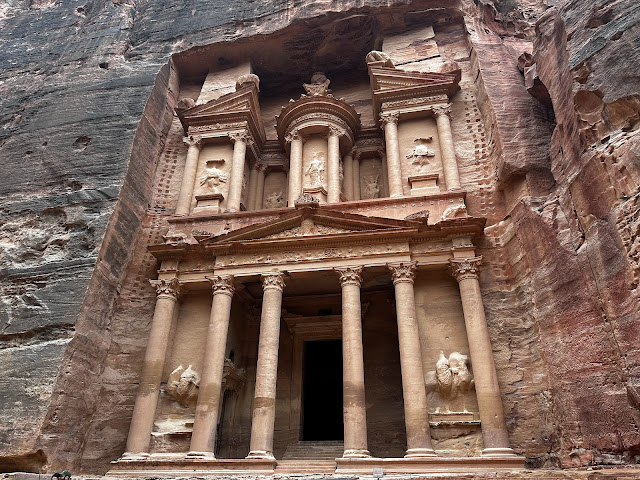The catacombs of Kom El Shoqafa
The catacombs of Kom El Shoqafa (which translates to "Mound of Shards") is an archaeological site located in Alexandria, Egypt. Estimated to have been initially constructed during the 2nd Century CE, it is considered to be one of the “Seven Wonders of the Middle Ages” (the other six being: the Colosseum in Rome, Italy; the Great Wall of China; Hagia Sophia in Istanbul, Turkey; the Leaning Tower of Pisa, Italy; Porcelain Tower of Nanjing, China; and Stonehenge in Wiltshire, England).
The
catacombs consist of Alexandrian tombs, statues and artifacts related to the
Pharaonic funerary cult. Due to the period of its’ construction, many features
of the tomb are a combination of Roman, Greek, and Egyptian cultures. The
facility was used as a burial chamber from the 2nd Century CE to the 4th Century
CE. It is believed that the catacombs were initially intended for a single
family, even though the facility was later expanded to house numerous other
individuals.
The
catacombs are also known for the Hall of Caracalla, which contains the bones of
horses of the emperor Caracalla in 215 CE.
At the front of the tomb chamber, there is a temple-like structure. An Agathodaemon in the form of a snake is depicted on both sides of the entrance to the inner tomb. Each snake wears a Roman Caduceus (a staff with two snakes coiled around it), a Greek Thyrsus (a staff covered with ivy vines and leaves) and an Egyptian Pschent (the double crown of Ancient Egypt). On top of the snake is a shield depicting Medusa (one of the three monstrous Gorgons in Greek mythology).

Either side of the entrance, there are the figures or a man and a woman.
While the man bears a Hellenistic hairstyle, the woman appears to bear a Roman
hairstyle.


There
are three stone sarcophagi with non-removable covers along the sides of the
tomb chamber. Each sarcophagus has an associated relief panel. The central panel
of the tomb chamber depicts the jackal headed Egyptian deity Anubis dressed in
Roman clothing mummifying a body lying on a lion bed.

The central panel of the tomb chamber depicting the jackal headed Egyptian deity Anubis dressed in Roman clothing mummifying a body lying on a lion bed
The lateral panels depict the Ancient Egyptian bull deity Apis receiving a gift or an offering.
 |
| The lateral panels depicting the Ancient Egyptian bull deity Apis receiving a receiving a gift or an offering The jackal headed Egyptian deity Anubis depicted dressed in Roman clothing |
 |
| An image depicted on the side wall of the inner tomb |
 |
| The depiction of a sun disc within the walls of the catacombs |





Comments
Post a Comment